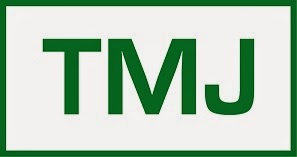There have been many super rich people in history for a long time. So rich in fact, that they would be insulted by being called the 1%, only. This is a great book that brings a great overview of how many global class rich people there have been over time. Not just recent billionaires like Bill Gates in the 20th century, but real money.
This is a great mix of 10 very different stories on 10 very different personalities. They are all a good representation of each of their times. The author starts with Machmud of Ghazni, who lived from 971-1030. Back then wealth was a zero sum game, a warrior takes away and others lose out. He was a military general leading an army who suffered 72 wounds from battle while gathering his wealth. It was a very large empire covering Afghanistan, Pakistan and Iran.
He spent most of his time ravaging the plains of India, and taking its gold with 100,000+ soldiers in a mobile army. Mansa Musa, was an African king who rivals the wealth of the Sultan of Brunei today. To say that he had a lot of gold, is like saying Bill Gates had a lot of good ideas on software. As in a lot more than most humans historically, ever. In today terms, he was a $400 billion-aire. So 4 times the wealth of Jeff Bezos today. In his time it was not about "trickle down theory", more trickle up, into his pocket. Not a lot was shared with the people, but if you were in his family, you had it made.
Mansa Musa was another wealthy man who gathered a lot of gold in his time. His personal name is not well known, but his location was. He brought together African trade, mainly salt, goods and gold together in Mali, in a trading town called Timbuktu. Over time, all kinds of goods could be found there, and trade left a huge deposit of wealth. One of the most important traded goods to create wealth there, were slaves sold to Europe. He just took his cut and made sure that the market ran smoothly. He built the right platform at the right time linking African and European markets.
The book is full of interesting comments on how billionaires in many different markets used whatever they could at the time, to maximize their wealth. One thing is common with all of them, and that is none of them were lazy. They all had to fight and innovate despite changing circumstances around them. Volatile changes in any market seems normal, it is about how your adapt and not give up. Emerging market or fully developed, all markets have clear opportunities. It is all in your attitude and point of view. How to execute, is what much of the detail in this book is all about.
The Top 3 Takeaways from this book that really impact any reader are:
1) This is the story of a very special person with hard wired talent that fits the times they live in. The pattern shows how despite many other people in competition, hard work and perseverance often wins the way to immense wealth.
2) The ability to work with numbers and get comfortable with the scale needed to be successful needs to be learned on the job. Only once you start to proceed do you find out all of the new skills you need to succeed.
3) This is never about somebody happy to be average. The common pattern shows that there is always a deep driver to push any rich person to a level few others ever reach. There may be lucky events, but the total result of wealth is about hard work, never pure luck.
2) The ability to work with numbers and get comfortable with the scale needed to be successful needs to be learned on the job. Only once you start to proceed do you find out all of the new skills you need to succeed.
3) This is never about somebody happy to be average. The common pattern shows that there is always a deep driver to push any rich person to a level few others ever reach. There may be lucky events, but the total result of wealth is about hard work, never pure luck.
Other great examples to learn about include Genghis Khan, Pope Alexander 6th, Jacob Fugger, John Law, Richard Arkwright, Howqua, Hetty Green, and Bill Gates. These were not well known to me, so I learned a lot. It is not so much what they did, but the amazing detail about how they executed and under what conditions that makes the book so interesting. It never hurt to learn from the success of others and try and apply it to your own modern situation. Lessons can be found, and advantages can be maximized for profit. Read and learn from these top-tier winners, you just never know what could be used in your own career. Highly recommended.
Please visit us for our Friday Feature Review where TMJ Partners will review books, movies, conferences and anything else with a financial theme. Follow us now for our free weekly updates, just click here. Thank you for reading and learning more about how money is made in finance!
For more Buy-Side and Sell-Side roles in Asia-Pacific, contact our TMJ Partners Japan & Asia Finance team.
Tokyo Tokyo








